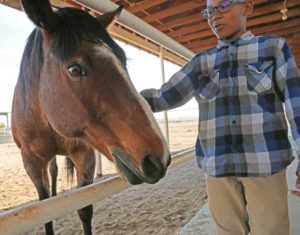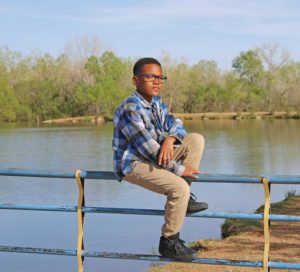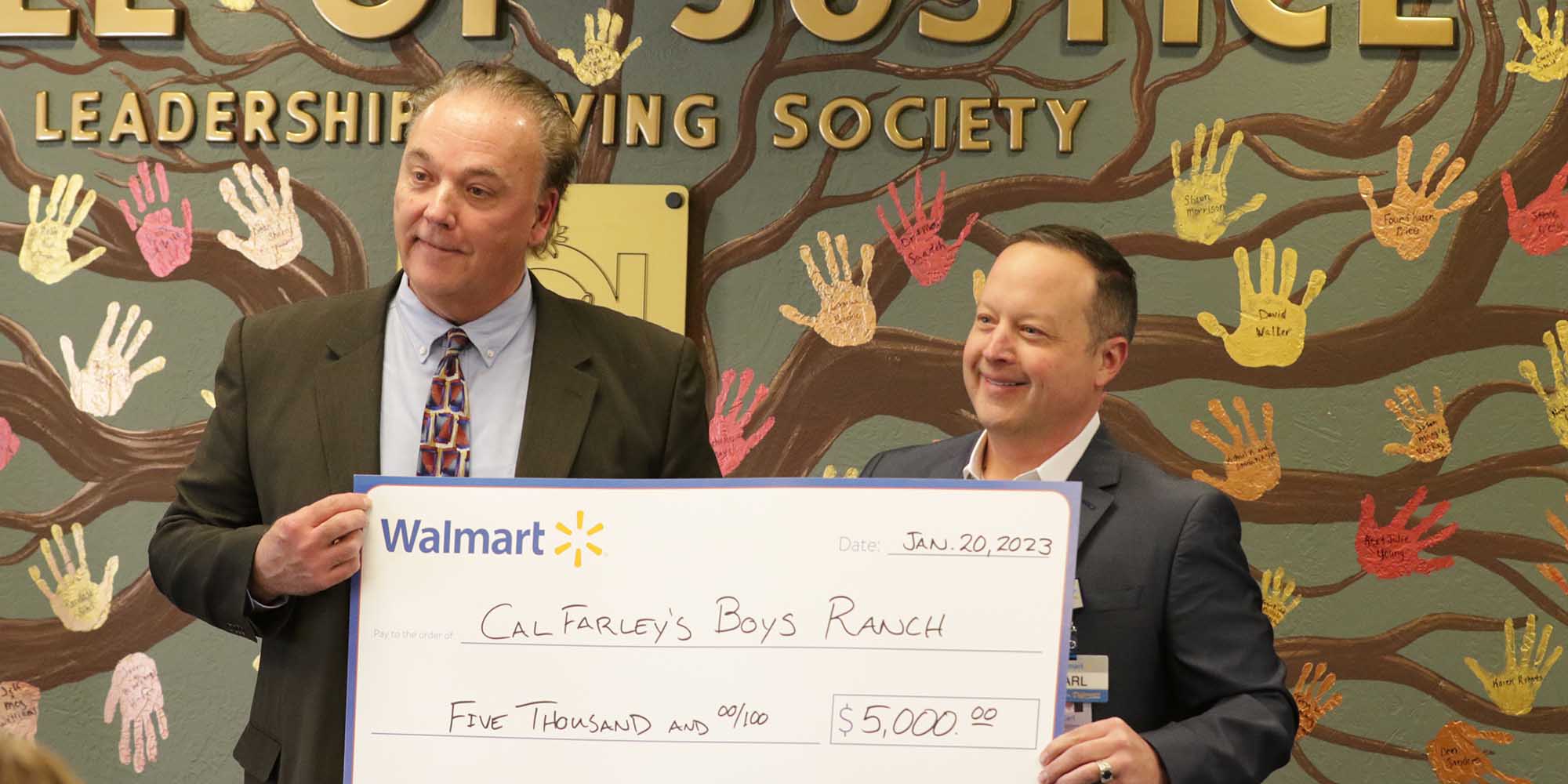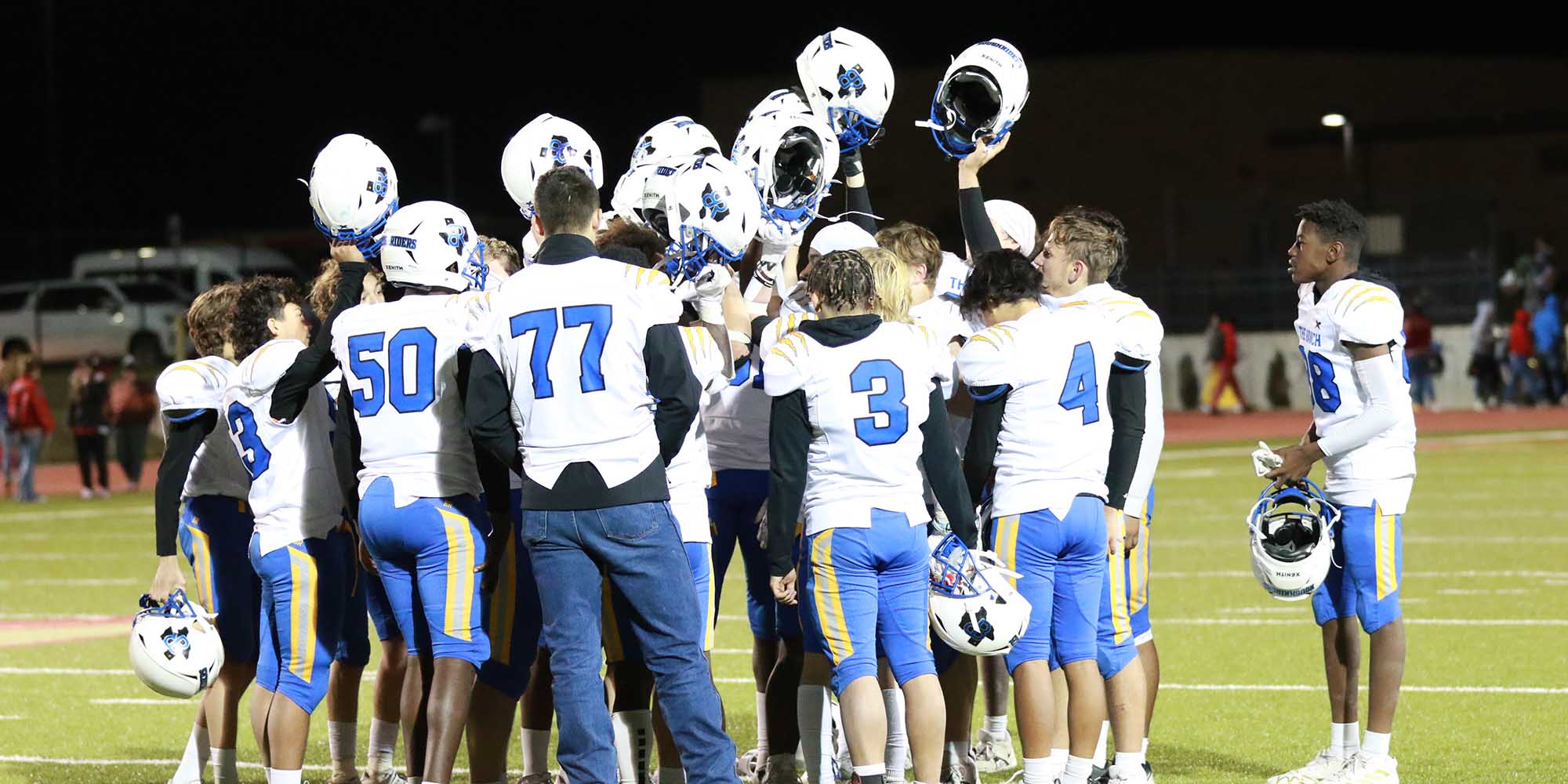He struggled against the ice-cold water, the current ripping away any progress he made. Trying to dog paddle his way to the rooftop, Nato’s head slipped under the water again and again. Sputtering for air, a pair of arms suddenly wrapped around him, pulling him from the murky water. Nato opened his eyes and looked up to see his older brother lifting him onto the family’s roof.
Overhead, the whirring of a helicopter drowned out whatever his brother was trying to tell him. Disoriented and cold, Nato began to shiver as the wind from its blades blasted his sopping-wet clothes. Thrust into a basket, strangers hoisted Nato up into the air. He swung back and forth, churning water and rooftops all he could see in any direction.
 Nato backed into a corner of the helicopter, his fear fighting to subside as, one by one, his family members and neighbors joined him.
Nato backed into a corner of the helicopter, his fear fighting to subside as, one by one, his family members and neighbors joined him.
But, wait! Where was Dad?
“I was screaming and crying,” Nato remembered. “I kept saying, ‘Are they going to leave my dad? Are they going to leave him?’”
Finally, Nato’s rescuers pulled his father up out of the water.
“He comes up holding onto the guy’s legs,” Nato said. “That was the moment when I realized that people were actually going to help us.”
Nato’s family had been trapped upstairs in their south Texas home by the torrents of Hurricane Harvey for three days, surviving on MRE’s and functioning on zero sleep.
To Nato’s recollection, the storm had begun as just a little rain storm. In a rare moment of happiness, Nato and his mother splashed around in the puddles together. But, those puddles grew, ominously inching their way up his front steps and through his home’s floorboards.
“I went from playing in the rain to being in a pool called Port Arthur,” Nato said.
In their days trapped upstairs, the family’s bids for aid were futile. At one point, Nato’s mother urged him to do whatever he had to in order to survive — even if it meant using her body as a floatation device in order to reach safety.
“We called 9-1-1, and it went to voicemail,” Nato said. “Who knew 9-1-1 had a voicemail inbox?”
Following the terror of the rising waters and their harrowing rescue was torture of a different form: day after endless day stretched on at an emergency shelter. As the floodwaters receded, the adults took a boat out to their home to see if anything could be salvaged.
They lost everything but a few clothes and trinkets.
“I felt like it was more than a flood. I felt like it was an actual person trying to get something from us,” Nato explained. “That storm had a mind of its own.”
With no home to return to, Nato stayed with his godmother while his parents struggled to pick up the pieces. But, no one could rescue Nato from the night terrors that ensued.
 “I would wake up in the middle of the night screaming, because I felt like water was around me,” he said.
“I would wake up in the middle of the night screaming, because I felt like water was around me,” he said.
As horrific as Nato’s tragic ordeal was, it was sadly far from the first time Nato, just 12 years old at the time, had feared for his safety. When he was younger, Nato had suffered physical abuse at the hands of a relative. It went on for years until his mother discovered bruises on his legs.
“She asked, ‘Why didn’t you tell me?’” Nato said. “I was always scared that something I would say would impact me.”
His mother quickly put a stop to it, but she felt powerless to rescue Nato from the very environment in which the family lived. Gunshots in the streets were commonplace in their neighborhood, sending the family scrambling to the floor for cover. Once, Nato escaped a potential kidnapping. His mother even had to pull Nato from school, where he was a regular target for bullies.
Nato, as engaging a personality as ever there was, hated the isolation homeschooling brought. Between his lessons, he began searching online for a way out.
What he found was Cal Farley’s Boys Ranch.
“I kept begging and pleading with my mom to go to Cal Farley’s,” Nato said.
Nato was preparing to come to Cal Farley’s when the hurricane destroyed their home. Cal Farley’s staff even worked with his family to accelerate Nato’s placement.
In eight months at Cal Farley’s, Nato has come a long way. He has been introduced to equine-assisted psychotherapy. This type of therapy involves emotional mirroring between the horse and its trainer — in this case, Nato — to help Nato process his emotions. Indeed, Nato is fond of the bond he’s formed with his horse.
“Horses are like dogs. Once you take care of them or give them a really big hug, they love you forever,” he said.
Nato likened this warm attachment to the way he was welcomed into the safety of Boys Ranch.
“They always have open hands to anyone in need, or anyone that has a troubled life or past. They don’t judge, either,” Nato explained. “It’s like a warm hug.”
Night Terrors
An estimated 1 to 6 percent of children in the United States experience night terrors, a much different phenomenon than ordinary nightmares.
Experts classify human sleep into four stages. Night terrors typically occur during the transition between the third and fourth stages. During a night terror, a child will exhibit intense periods of crying and fear, yet remain asleep. They will be very difficult to wake. Night terrors typically occur about 90 minutes after the child falls to sleep. Night terrors may run in families, but also can result from stress, fever, sleep deprivation, medications and/or anesthesia.
A night terror may last up to 30 minutes, after which the child will typically relax and return to normal sleep. Most of the time, a child who experiences night terrors will not remember the experience the next morning.
So, how do you help a child with night terrors? It’s best to wait it out, and make sure the child isn’t injured thrashing about. Do not try to wake a child during a night terror, as it may take them longer to settle down and return to sleep. While there’s no treatment for night terrors, you can help by reducing stressors, establish a bedtime routine and making sure your child gets adequate rest. If night terrors repeat about the same time each night, try waking your child about 15 minutes before to help prevent it.













